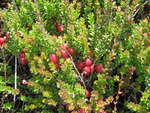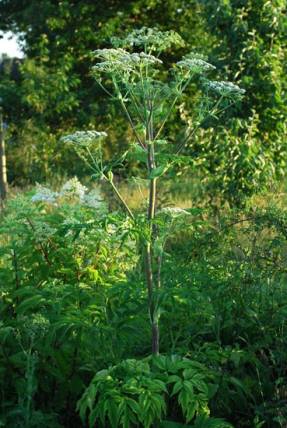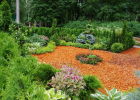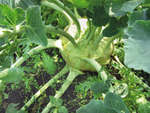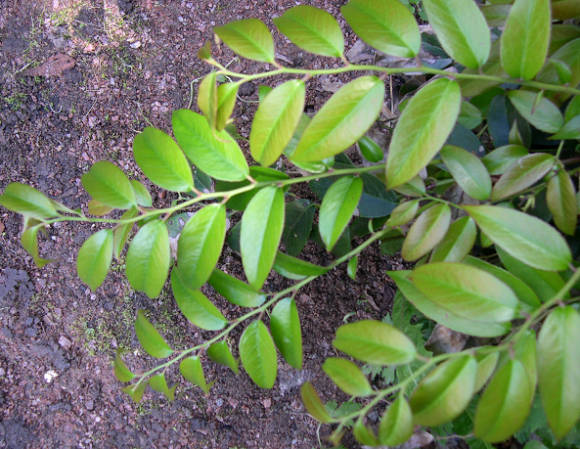
Every true "borage" knows how important it is to form a plant correctly, although many gardeners neglect this. I did not shorten the lateral shoots in time, thickened the plantings - and already in the middle of summer you make your way into the greenhouse with difficulty. They say that in cramped quarters, but not offended. But in the greenhouse, the order is different. A bee will not fly into such a thicket for pollination, but complete expanse for diseases and pests.
All operations on the formation of the plant must be carried out only in the first half of the day, so that all the wounds inflicted on the plant have time to dry out by the evening.
The top of the growing shoot should always be as illuminated as possible. That is why when the lash reaches the upper part of the support for further growth, it should not be allowed to grow along the trellis, which leads to the closing of the plants and the formation of a “tent”. In this case, the lower leaves of the plants will quickly turn yellow and die off, which will immediately affect the harvest of cucumbers.
Therefore, weekly, the whip must be directed downward, clinging to the trellis and other plants. And all the shoots that tend to grow up or go out into the aisles, pinch without taking into account the leaves and ovaries and direct them down into the row. In this case, the shoots and leaves themselves will choose the position that is optimal in terms of illumination.
Quite a frequent occurrence, especially in hot weather and in film greenhouses, is the absence of ovaries. At the same time, some of the ovaries do not grow and gradually begin to turn yellow, and then quickly dry up and disappear.
Read more in the article Why don't ovaries grow on cucumbers?
And in order to improve the filling of the ovaries, especially in cool weather, it is necessary to carry out foliar feeding of plants with the preparations "Zircon" or "Epin", which increase the resistance of plants to stressful situations.
Disease prevention at the end of summer

By the beginning of August, cucumbers have a sharp increase in the risk of disease with powdery mildew and downy mildew. With the first disease, the leaves are covered with a light powdery bloom, which interferes with photosynthesis, as a result of which the fruits ripen slowly, the yield decreases.
Downy mildew appears as spots on the back of the leaf, which gradually darken. At the same time, the leaves turn yellow and dry up, the harvest falls. To prevent these diseases, it is necessary to spray plants with "Fitosporin" and "Zircon" every week from the end of July. At the same time, the risk of fungal diseases is immediately reduced, and the yield increases.
There is also a folk remedy against this misfortune. To prepare it, you need to mix one part of sour milk or milk whey with 5 parts of water and add 3 drops of pharmacy iodine to each liter of solution. Spray the plants with this solution on both sides of the leaf every week.
Read also the article Powdery mildew of cucumbers.
How to prolong the "work" of the leaves?
Due to the specific conditions of the greenhouse (high planting density, high air humidity, a significant decrease in illumination), the productivity of the "work" of the leaves of the muskets is significantly reduced. This happens especially quickly with a high planting density and strong foliage.
At the same time, there is a strong shading of the leaves, especially the lower ones, a sharp reduction in their productive work, and then they turn yellow and die off. This happens especially quickly with a lack of nitrogen and after cool nights.
You can help the trouble. To prolong the work of the leaves of the lower tier, it is necessary not to thicken the plantings and to form the plants so that light penetrates the leaves of the lower tier. And it is possible to extend the life of the leaves of the upper tier with a favorable water regime and sufficient, but no frills, nutrition with all macronutrients.
Is it possible to prolong the fruiting of cucumbers?
By the beginning of August, an abundant wave of fruiting of cucumbers generally takes place, their leaves become coarse and prickly, in some places powdery mildew appears on them.
At this time, urgent help to plants is needed. It is necessary to immediately carry out foliar feeding of plants with a solution of urea (0.5 tablespoons per 10 liters of water). After such feeding, the leaves of the plants will again become soft, photosynthesis will intensify in them. And the powdery mildew that has appeared on them in the initial stage can be easily suppressed with the help of "Immunocytophyte".
By this time, the soil has become very compacted, but it should not be loosened, because it is easy to damage the root system of cucumbers. The soil should be watered with warm water and mulched with humus, in extreme cases - peat, grass or sawdust. After that, the plants quickly form new suction roots, and the growth of fruits will increase.
By the beginning of September, the lower tier ends fruiting, the leaves turn yellow, and the stems become bare. If the weather still permits, then you can try to "rejuvenate" the plants. To do this, carefully lower the whips down a little, bend the lower bare part of the stem to the ground to 5–6 internodes or roll it up in a ring, pin it to the ground and fill it with fresh soil fertilized with ash. But all this must be done before watering, while the stems are soft, after watering the lashes become very fragile and break easily.
At the same time, due to the formation of new, active roots from the stem, the plant begins to grow and bear fruit again. At this time, the cucumbers must be intensively "fed" with ash and mullein solution with the addition of urea.
"Ural gardener", No. 34, 2014

